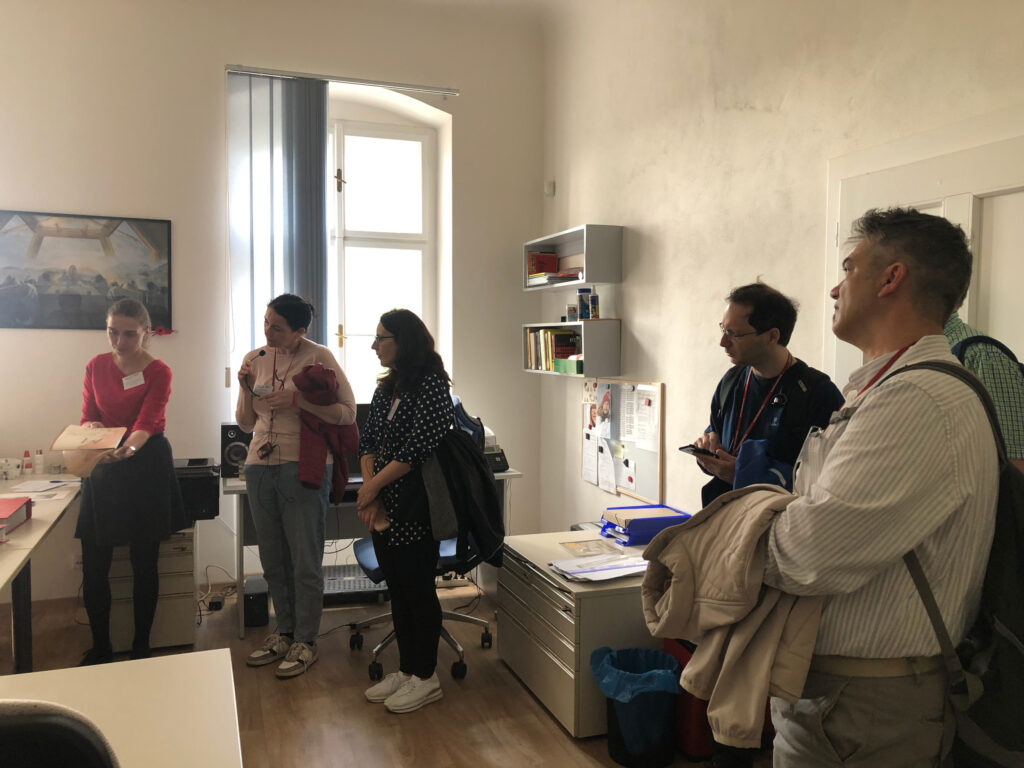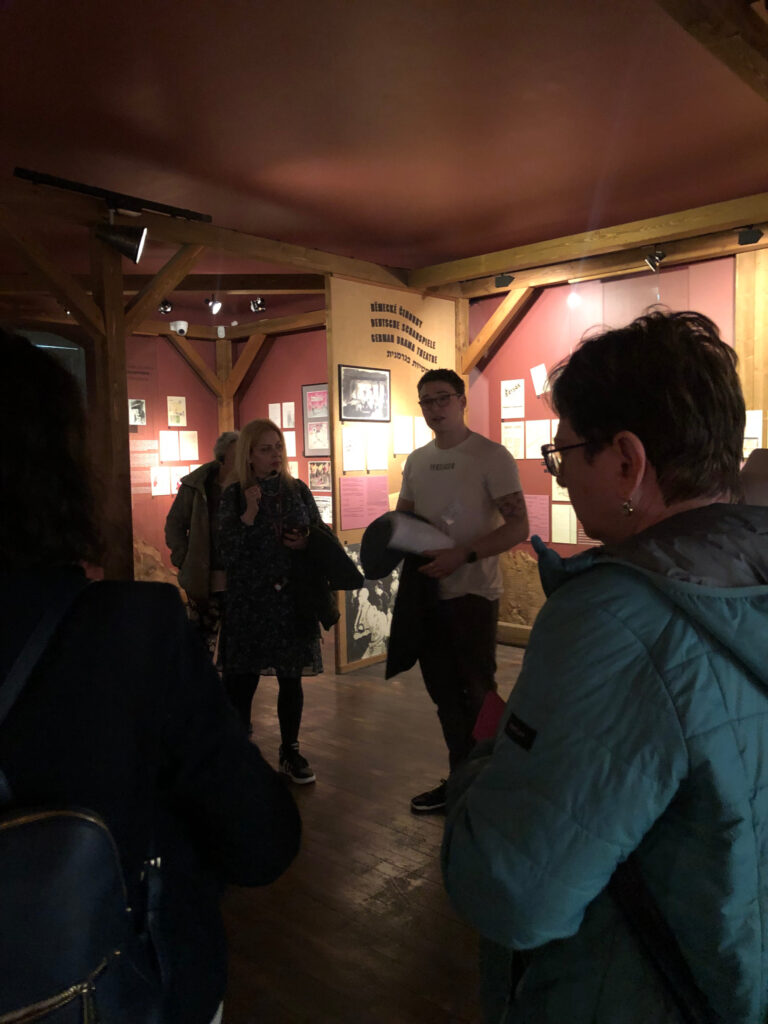Three seminars for teachers took place at the Terezín Memorial in the spring of 2024, two of which were attended not only by Czech but also by foreign teachers.
The Czech-Polish seminar was held from March 7 to 10, 2024. This was the fifth-level teacher training format focused on teaching about the Holocaust. This seminar, co-organized by the Terezín Memorial and the Auschwitz-Birkenau State Museum, is attended by twelve Czech and twelve Polish teachers. It is held in two parts, one at the Terezín Memorial and the second in the Auschwitz-Birkenau State Museum in Poland, within the same calendar year.
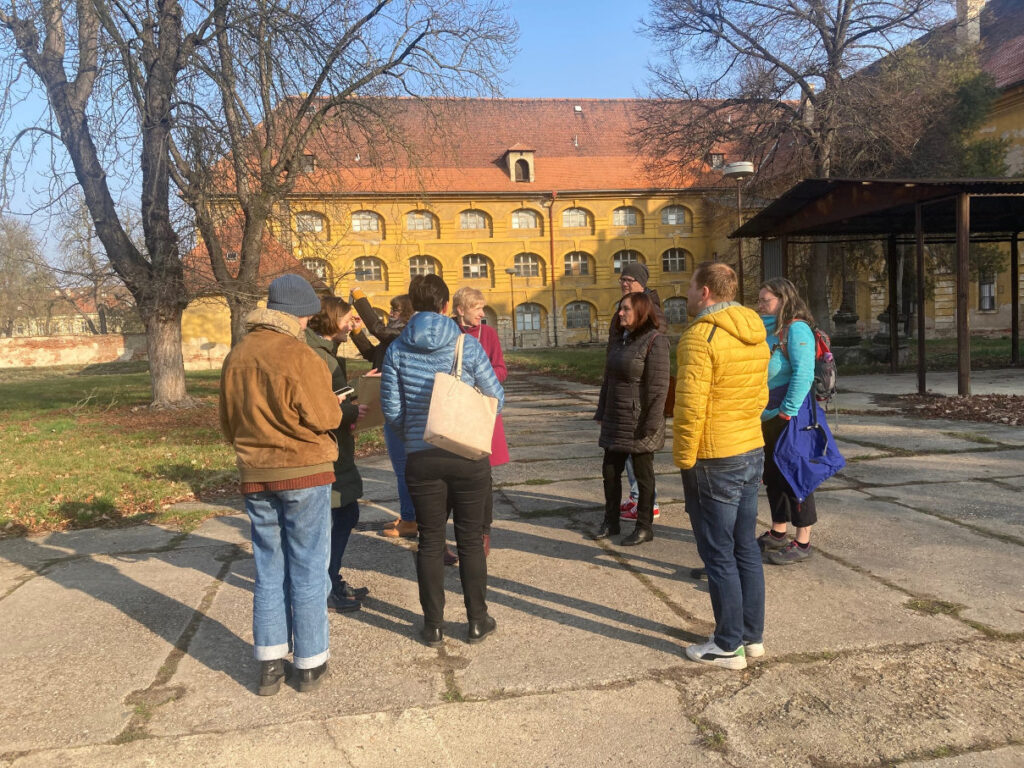
The seminar in the Terezín Memorial began on Thursday, March 7, with the participants presenting their home regions. On Friday morning, Polish teachers took a tour of the former Terezín Ghetto, while their Czech counterparts visited places, which are inaccessible to ordinary visitors to Terezín, but which are integral to the history of the city. (For example, the rooms in the former military hospital where Gavrilo Princip was treated, etc.). In addition, in the afternoon they all heard a lecture on the history of the branch of the Flossenbürg concentration camp located in Litoměřice in the years 1944-1945. They also visited the depository of the Department of Collections and learned about the work of the collection curators. The Czech teachers showed their colleagues the projects they had done with their students at school.
The Saturday program began in the Small Fortress, the site of the Gestapo Police Prison between 1940 and 1945. A guided tour of this area was prepared for the Polish participants. The Czech teachers were given a comprehensive introduction to the methodology of the workshop, “A Schoolchild in the Protectorate,” which is run by the Terezín Memorial’s Department of Education. They were shown the documents used by students as part of the educational programs in the Terezín Memorial, and later visited the premises of the Small Fortress, which are not part of the tour route for ordinary visitors.
All the teachers spent the afternoon together attending the two workshops of the Terezín Memorial’s Department of Education ‒ The Bystander Effect and In the Footsteps of Memory.
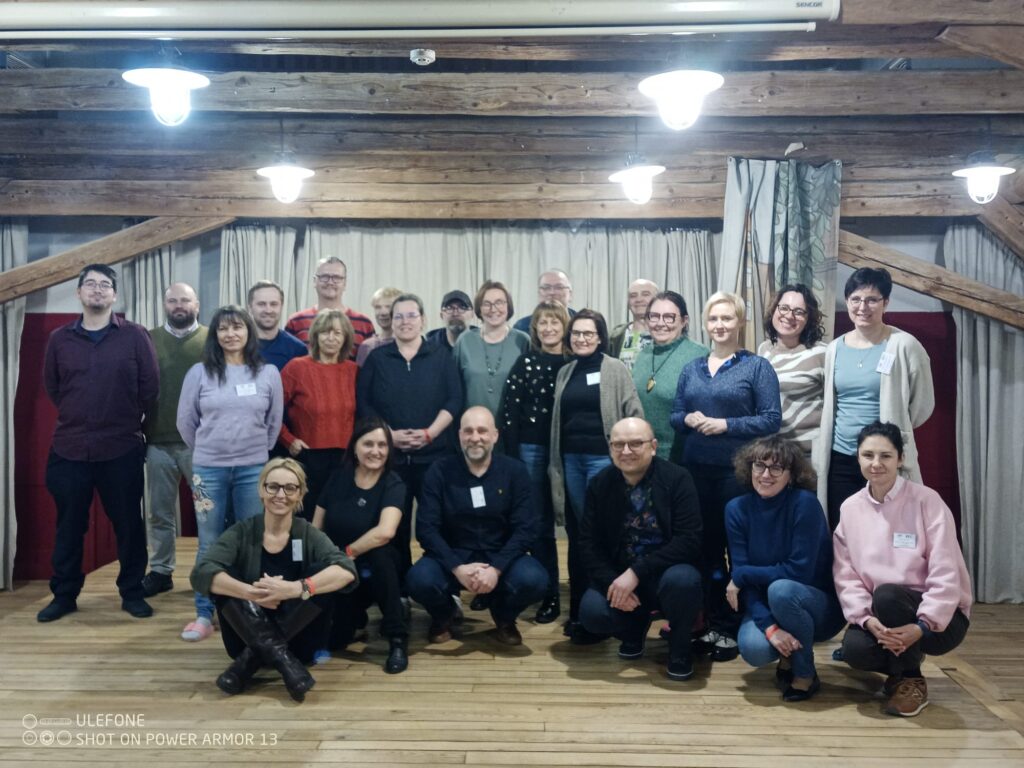
After the seminar ended on Saturday evening, the teachers went together for a tour of nearby Litoměřice. They did not have to say goodbye completely, as the whole group will meet again, in the Auschwitz-Birkenau State Museum in September 2024.
Seminar How to Teach about the Holocaust

This year, the Jewish Museum in Prague and the Terezín Memorial held the 24th annual seminar How to Teach about the Holocaust. The seminar is organized in cooperation with the the Museum of Romani Culture in Brno and under the auspices of the Czech Ministry of Education.
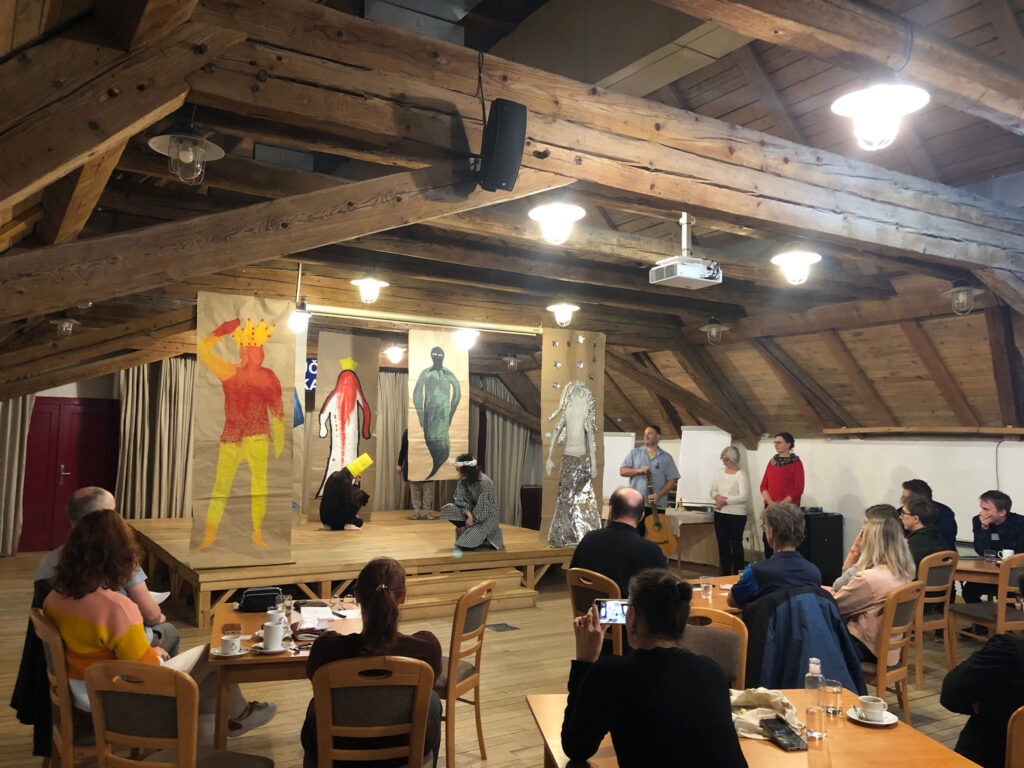
The three-day first-level event, which was attended by 45 teachers from Czech primary and secondary schools, took place from February 23 to 25, 2024.
The seminar attendees heard lectures on Judaism and the history of the Jewish settlement of Bohemia and Moravia, on anti-Semitism and its manifestations in the past and present, on the propaganda function of the Terezín Ghetto, the Holocaust of the Roma and Sinti, and the principles of teaching about the Holocaust in schools. The program also included workshops prepared by the Terezín Memorial and the Museum of Romani Culture in Brno, highlighting some of their projects offered to school groups. The third event the participants could attend was a theatre-cum-art workshop by Dr. Jana Jebavá. As part of their training course, the teachers also take guided tours of Prague’s Jewish Town, the former Terezín Ghetto and the former Gestapo Police Prison in the Small Fortress in Terezín. They greatly appreciated the personal meeting with the Terezín Ghetto survivor Dita Krausová, who told them about her fate and life in the Ghetto as well as about her postwar life in one of the Israeli kibbutz and in Israel.
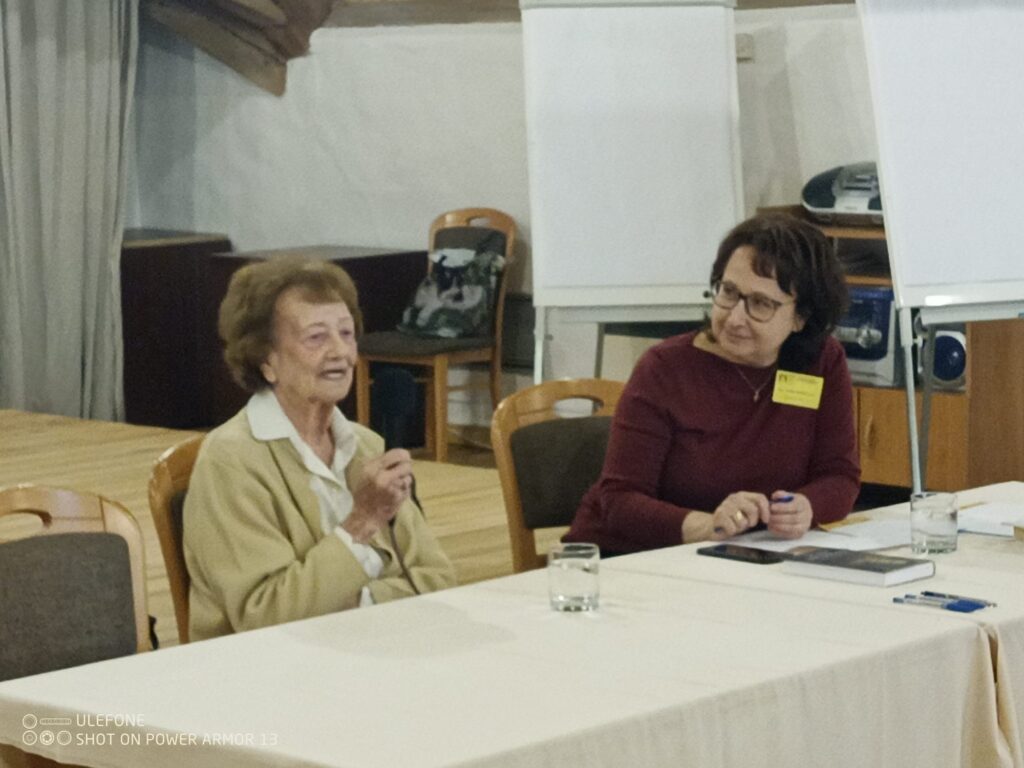
Early in May 2024, the Terezín Memorial hosted the first educational seminar for teachers from Hungary, co-organized by the Terezín Memorial and the Israeli Yad Vashem Memorial, with financial support from the Federal Republic of Germany. The Hungarian teachers who came to Terezín had previously completed many training courses in Hungary and abroad. As a result, their visit and introduction to the history of the Terezín Ghetto and the Gestapo Police Prison provided an additional educational benefit for them.
The chief goal of the Hungarian teachers’ educational stay in Terezín was to show them the former repressive facilities in Terezín and the Memorial’s exhibitions. They also followed in the footsteps of the former prisoners of Hungarian origin, of whom more than 1,000 were imprisoned in Terezín during World War II.
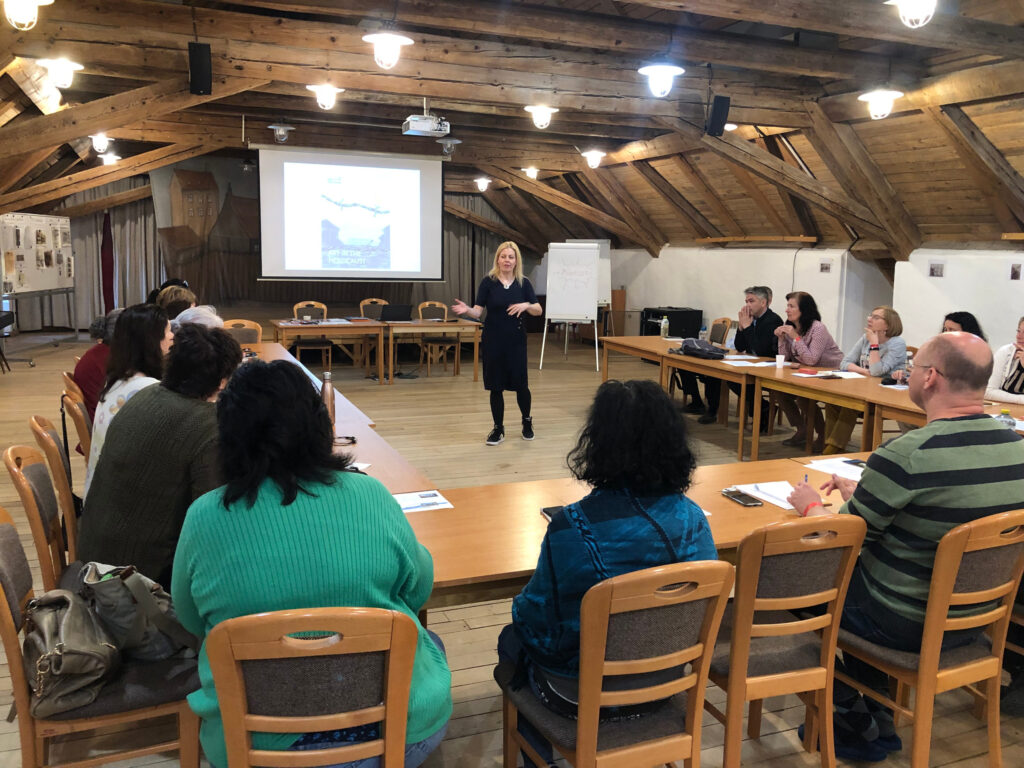
A comprehensive program was arranged for the participants. It started with a visit to the Department of Documentation at the Terezín Memorial. Here, the local experts introduced them to the operations and activities of this Department and gave them an overview of the various types of documents stored in its archive. The visitors had the opportunity to view the magazine Vedem, published in the Ghetto by young inmates. They were also shown how to work with the Terezín Memorial’s database and what kind of information can be retrieved. The program then continued with a presentation on the history of the Terezín Ghetto. This was followed by detailed tours of the former Ghetto in the town of Terezín and the Gestapo Police Prison in the Small Fortress. The agenda also featured two workshops. The first one, entitled “Art during the Holocaust?,” was presented by Szilvia Petö Dittel, who represented the organizer of the event, the Yad Vashem Memorial. The second workshop, “Following the Traces of Memory,” showcased the activities of the Terezín Memorial’s Department of Education. Using part of the IWalk mobile application, the attendees were introduced to an “IWalk-stop” dealing with the former Terezín Ghetto, which is also available in Hungarian. In this particular case, the workshop managed to connect the IWalk mobile application with the paper version of the workshop, which is used by the Department of Education during its seminars for youth groups in the Terezín Memorial.

According to the comments subsequently written by the participants, the seminar significantly contributed to expanding their awareness of the operation and roles of this repressive facility. The history of the Terezín Ghetto will now certainly get its well-deserved place in the lessons these teachers will give in their schools.

Sylvie Holubová and Naděžda Seifertová


